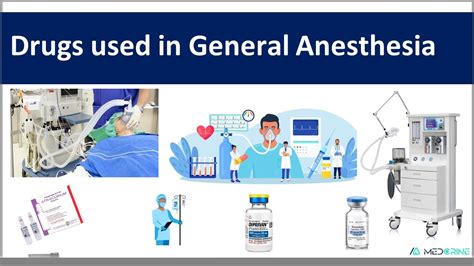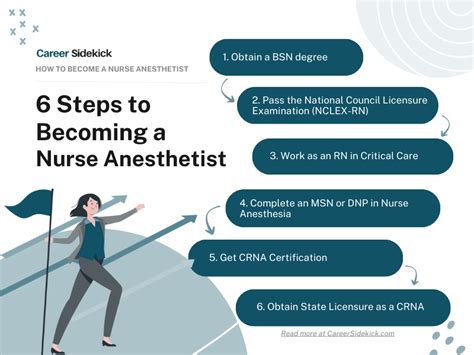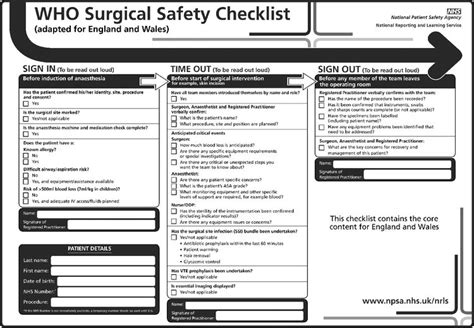5 Steps to CRNA

Introduction to Certified Registered Nurse Anesthetists (CRNAs)

Certified Registered Nurse Anesthetists (CRNAs) are advanced practice registered nurses (APRNs) who specialize in providing anesthesia care to patients. They work in a variety of settings, including hospitals, surgical centers, and private practices, and are responsible for administering anesthesia, monitoring patients’ vital signs, and ensuring their safety during medical procedures. To become a CRNA, one must follow a specific set of steps, which are outlined below.
Step 1: Earn a Bachelor’s Degree in Nursing

The first step to becoming a CRNA is to earn a Bachelor of Science in Nursing (BSN) degree from an accredited nursing program. This typically takes four years to complete and provides students with a foundation in nursing principles, including anatomy, physiology, and pharmacology. During this time, students also gain clinical experience in a variety of healthcare settings.
Step 2: Gain Experience as a Registered Nurse (RN)

After graduating from a BSN program, aspiring CRNAs must gain experience as a Registered Nurse (RN) in a critical care setting, such as an intensive care unit (ICU) or emergency department. This experience is essential for developing the skills and knowledge necessary to become a CRNA. Most CRNA programs require applicants to have at least one year of critical care experience.
Step 3: Earn a Master’s Degree in Nurse Anesthesia

The next step is to earn a Master’s Degree in Nurse Anesthesia from a program accredited by the Council on Accreditation of Nurse Anesthesia Educational Programs (COA). These programs are highly competitive and typically take two to three years to complete. They provide students with advanced training in anesthesia principles, including pharmacology, physiology, and anatomy, as well as clinical experience in administering anesthesia.
Step 4: Pass the National Certification Exam

After graduating from a nurse anesthesia program, aspiring CRNAs must pass the National Certification Exam administered by the National Board of Certification and Recertification for Nurse Anesthetists (NBCRNA). This exam tests a candidate’s knowledge and skills in anesthesia care and is a requirement for certification.
Step 5: Maintain Certification and Pursue Continuing Education

Finally, CRNAs must maintain their certification through ongoing continuing education and adherence to the NBCRNA’s recertification requirements. This includes completing continuing education courses, participating in professional development activities, and adhering to the NBCRNA’s code of ethics. By following these steps, individuals can become certified and licensed as CRNAs and pursue a rewarding career in anesthesia care.
💡 Note: The specific requirements for becoming a CRNA may vary depending on the state or country in which one practices, so it's essential to check with the relevant authorities for the most up-to-date information.
The following table summarizes the typical education and training requirements for CRNAs:
| Step | Requirement | Duration |
|---|---|---|
| 1 | Bachelor’s Degree in Nursing | 4 years |
| 2 | Gain experience as a Registered Nurse | 1-2 years |
| 3 | Master’s Degree in Nurse Anesthesia | 2-3 years |
| 4 | Pass the National Certification Exam | 1 day |
| 5 | Maintain certification and pursue continuing education | Ongoing |

Some key skills and qualities required to become a successful CRNA include: * Strong foundation in nursing principles and practices * Ability to work well under pressure and make quick decisions * Excellent communication and interpersonal skills * Ability to work effectively in a team environment * Strong attention to detail and ability to monitor patients’ vital signs * Ability to stay up-to-date with the latest developments in anesthesia care
In terms of salary and job outlook, CRNAs are among the highest-paid nursing professionals, with median salaries ranging from 150,000 to over 200,000 per year, depending on the location and setting. The job outlook for CRNAs is also excellent, with the Bureau of Labor Statistics predicting a 13% increase in employment opportunities from 2020 to 2030.
To summarize, becoming a CRNA requires a significant amount of education, training, and experience. However, for those who are passionate about anesthesia care and willing to put in the time and effort, it can be a highly rewarding and challenging career. With the right skills, knowledge, and personal qualities, individuals can succeed as CRNAs and make a positive impact on patients’ lives.
What is the typical salary range for CRNAs?

+
The median salary range for CRNAs is between 150,000 to over 200,000 per year, depending on the location and setting.
How long does it take to become a CRNA?

+
Typically, it takes around 7-10 years to become a CRNA, including 4 years of undergraduate study, 1-2 years of critical care experience, and 2-3 years of graduate study in nurse anesthesia.
What are the main responsibilities of a CRNA?

+
CRNAs are responsible for administering anesthesia, monitoring patients’ vital signs, and ensuring their safety during medical procedures. They also work with other healthcare professionals to develop and implement anesthesia care plans.



